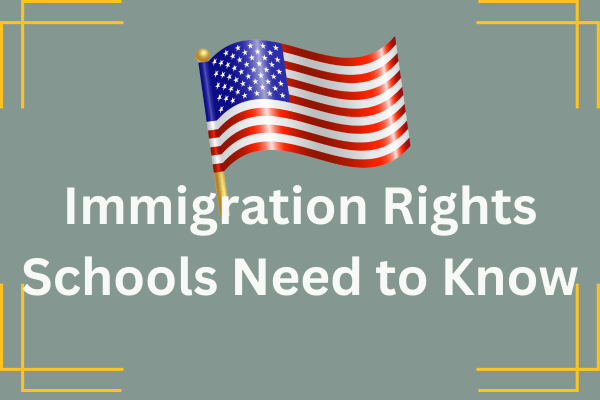Immigration Rights in Schools: What Educators Must Know | Legal Guide
The information in the following article was drawn from the “Immigration Rights Schools Need to Know Document” which was assembled by members of the Newcomer Coaching group from the State of Michigan.
In today’s diverse educational landscape, it’s crucial for schools to understand and uphold the rights of immigrant students and their families. This blog post will explore key aspects of immigration rights that every school should be aware of to ensure a safe, inclusive, and legally compliant learning environment.
The Cornerstone: Plyler v. Doe
At the heart of immigrant students’ rights lies the landmark 1982 U.S. Supreme Court decision in Plyler v. Doe. This ruling established that undocumented immigrant children have the right to receive free public education in the United States. This decision forms the foundation of educational equity for immigrant students and prohibits schools from:
- Denying admission to students based on their immigration status
- Requiring students or parents to disclose their immigration status
- Engaging in practices that might “chill” or discourage enrollment
FERPA and Student Privacy
The Family Educational Rights and Privacy Act (FERPA) plays a crucial role in protecting student privacy, including that of immigrant students. Schools must:
- Maintain the confidentiality of student records
- Obtain parental consent before releasing student information
- Allow parents to opt out of directory information disclosure
Key Action: Superintendents and administrators should create and enforce district-wide FERPA compliance policies.
Language Access and Support
Schools have a responsibility to ensure effective communication with all families, regardless of their primary language. This includes:
- Providing interpretation and translation services
- Offering language access during and after school hours
- Training staff on using language support resources
Best Practice: Develop a comprehensive language access plan and train all staff members on its implementation.
Responding to Immigration Enforcement
Schools should be prepared to handle potential interactions with Immigration and Customs Enforcement (ICE). Important steps include:
- Creating a district response plan for ICE presence on or near school grounds
- Training staff on proper protocols
- Understanding the limitations on ICE activities in schools
Critical Note: Schools are considered “sensitive locations” where immigration enforcement actions are generally avoided
Enrollment and Registration
To comply with Plyler v. Doe, schools must ensure their enrollment processes do not discriminate against immigrant students. This means:
- Not asking about citizenship or immigration status during registration
- Accepting various forms of proof of residency
- Providing enrollment information in multiple languages
Supporting Families Facing Deportation
Schools can play a vital role in supporting students whose families may be facing deportation:
- Keeping emergency contact information up-to-date
- Providing resources on family preparedness plans
- Offering counseling and social work services
Resource Tip: Families can find links to organizations that provide Immigration & Legal Resources through our website.
Training and Awareness
Ensuring all school staff are well-informed about immigrant students’ rights is essential. This includes:
- Regular training sessions on legal requirements and best practices
- Awareness campaigns about Plyler v. Doe and FERPA
- Providing staff with resources to support immigrant students and families
Conclusion
Understanding and protecting the rights of immigrant students is not just a legal obligation—it’s a moral imperative that fosters a more inclusive and equitable educational environment. By implementing these practices and staying informed about immigration rights, schools can ensure they’re providing the best possible support for all students, regardless of their immigration status. Remember, creating a welcoming school environment benefits not only immigrant students but the entire school community, promoting diversity, empathy, and global awareness among all students.


